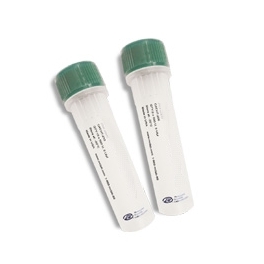 View full size
View full size
- Analýza nukleových kyselin
- Analýza proteinů
- Biochemické reagencie
- Enzymy
- Editování genů
- Klonování
- Klinická diagnostika
- Laboratorní příslušenství
- Software
- Ke stažení
- A&A Biotechnology
Novinky
-
Martinská genetická konference 2023
V březnu se zúčastníme celoslovenské genetické konference, která se koná 16. - 17. 3. 2022 v hotelu Turiec ve slovenském Martině. Konferenci pořádá Slovenská společnost lékařské genetiky a je již trad...
Více -
Genetická konference GSGM a Genetické dny
Navštivte nás na Genetické konferenci pořádané Genetickou společností Gregora Mendela. Tento rok proběhne v termínu 5. - 7. 10. společně s konferencí Genetické dny, jež se konají ve dvouletých interva...
Více -
55. výroční cytogenetická konference
Přijďte se na nás podívat na Celostátní sjezd Společnosti lékařské genetiky a genomiky ČLS JEP a 55. výroční cytogenetickou konferenci, jež se koná ve Wellness Hotelu Step 15. a 16. září. Rádi se s Vá...
Více
 View full size
View full size
Description:
Extreme Thermostable SSB is a single-stranded DNA binding protein isolated from a hyperthermophilic microorganism. It remains fully active after incubation at 95°C for up to 60 minutes. Due to its ability to withstand extremely high temperature environments, ET SSB can be used in applications that require extremely high temperature conditions, such as nucleic acid amplification and sequencing.
Source:
Purified from an E. coli strain that overexpresses the SSB gene isolated from a hyperthermophilic microorganism.
Application:
- Improves the yield of multiplex PCR and multiplex HAD
- Increases the yield and processivity of RT during RT-PCR(1,2)
- Increases the yield and specificity of PCR reactions(3-7)
- Improves the processivity of DNA polymerase(8)
- Stabilization and marking of ssDNA structure (9)
- Improves DNA sequencing through regions with strong secondary structure(6)
- Enhances the RecA activity for ssDNA binding and strand transfer (10,11)
Unit Definition:
Sold by mass of pure protein as determined by OD280.
Recommended Storage Condition: -20ºC
Reference:
1. Baugh, L. R., Hill, A. A., Brown, E. L. & Hunter, C. P. (2001) Nucleic Acids Res 29, E29.
2. Villalva, C., Touriol, C., Seurat, P., Trempat, P., Delsol, G. & Brousset, P. (2001) Biotechniques 31, 81-3, 86.
3. Schwarz, K., Hansen-Hagge, T. & Bartram, C. (1990) Nucleic Acids Res 18, 1079.
4. Chou, Q. (1992) Nucleic Acids Res 20, 4371.
5. Oshima, R. G. (1992) Biotechniques 13, 188.
6. Rapley, R. (1994) Mol Biotechnol 2, 295-8.
7. Olszewski, M., Rebala, K., Szczerkowska, Z. & Kur, J. (2005) Mol Cell Probes 19, 203-5.
8. Myers, T. W. & Romano, L. J. (1988) J Biol Chem 263, 17006-15.
9. Delius, H., Mantell, N. J. & Alberts, B. (1972) J Mol Biol 67, 341-50.
10. Reddy, M. S., Vaze, M. B., Madhusudan, K. & Muniyappa, K. (2000) Biochemistry 39, 14250-62.
11. West, S. C., Cassuto, E. & Howard-Flanders, P. (1982) Mol Gen Genet 186, 333-8.
Košík
Platební brána



